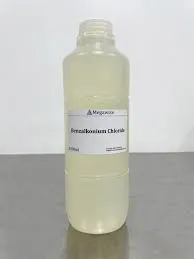flocculant types
Understanding the Different Types of Flocculants
Flocculants are essential chemicals used in various industries to aggregate particles in liquids, promoting their settlement and separation. This process, known as flocculation, plays a vital role in water treatment, mining, and the food industry, among others. Flocculants can be broadly classified into several types based on their chemical composition, charge, and application. This article will explore the different types of flocculants, their properties, and their uses.
1. Natural Flocculants
Natural flocculants are derived from natural sources such as plants, algae, and microorganisms. These flocculants are biodegradable and environmentally friendly, making them suitable for applications where ecological impact is a concern.
- Examples - Starch Commonly used in wastewater treatment, starch exhibits excellent flocculation properties due to its ability to bind particles. - Chitosan Sourced from the shells of crustaceans, chitosan is a biopolymer known for its high efficiency in removing suspended solids and various contaminants from water.
Natural flocculants are often preferred in industries like food and beverage, where chemical safety is paramount.
Synthetic flocculants are man-made polymers that are engineered for specific applications. They are typically more efficient than natural flocculants and are often tailored to meet the specific needs of a process.
- Polyacrylamide One of the most commonly used synthetic flocculants, polyacrylamide, comes in various formulations, including anionic, cationic, and non-ionic types. - Anionic Flocculants These have a negative charge and are used for treating wastewater that contains positively charged particles, such as heavy metals. - Cationic Flocculants These possess a positive charge and are effective in clarifying sludge in wastewater treatment plants, especially when dealing with organic materials. - Non-Ionic Flocculants These have no charge and are utilized in applications where the pH level of the medium is variable.
The versatility of synthetic flocculants allows for their use in a broad range of applications, including mining, where they help in the recovery of valuable minerals by enhancing the separation process.
flocculant types

3. Inorganic Flocculants
Inorganic flocculants are generally composed of metal salts and are widely used in the water treatment industry. They work by destabilizing colloidal particles, allowing them to clump together and settle out of suspension.
- Aluminum Sulfate (Alum) One of the oldest coagulants used in water treatment, alum is effective in removing turbidity and improving water clarity. - Ferric Chloride This is another common inorganic flocculant that is particularly effective in removing phosphates from wastewater and helps in controlling algae growth in water bodies.
Inorganic flocculants are often more cost-effective than organic options, making them a popular choice in large-scale municipal water treatment facilities.
4. Applying Flocculants
When selecting a flocculant, it's crucial to consider several factors, including the nature of the wastewater, the presence of soluble or insoluble substances, and the desired outcome of the treatment process. Effective flocculation can significantly enhance the efficiency of sedimentation, resulting in clearer water and reduced disposal costs for sludge.
The application of flocculants varies widely, from clarifying drinking water to recovering valuable metal ores in mining. It is essential for operators to conduct jar tests and other pilot studies to ascertain the correct dosage and type of flocculant to use for their specific conditions.
Conclusion
Flocculants are indispensable in many industrial applications, and understanding the types and their respective benefits can significantly impact the efficiency of processes. Whether using natural, synthetic, or inorganic flocculants, optimizing their use not only improves operational efficiency but also contributes to environmental sustainability. As industries continue to evolve, the development of new and more effective flocculants will play a crucial role in meeting the ever-growing demands for water clarity, resource recovery, and environmental protection.
-
Pbtc Scale InhibitorPBTC: A Scale Protector for Industrial Water TreatmentNewsAug.05,2025
-
Organic Phosphonate: An Efficient Defender in the Field of Scale InhibitionNewsAug.05,2025
-
Hydrolyzed Polymaleic Anhydride: Green Pioneer in Scale Inhibition FieldNewsAug.05,2025
-
PAPEMP Polyamino Polyether Methylene Phosphonic Acid For SaleNewsAug.05,2025
-
Flocculant Water Treatment: A Pioneer in Purification in the Field of Water TreatmentNewsAug.05,2025
-
Benzyl Isothiazolinone: An Efficient and Broad-Spectrum Antibacterial Protective GuardNewsAug.05,2025





